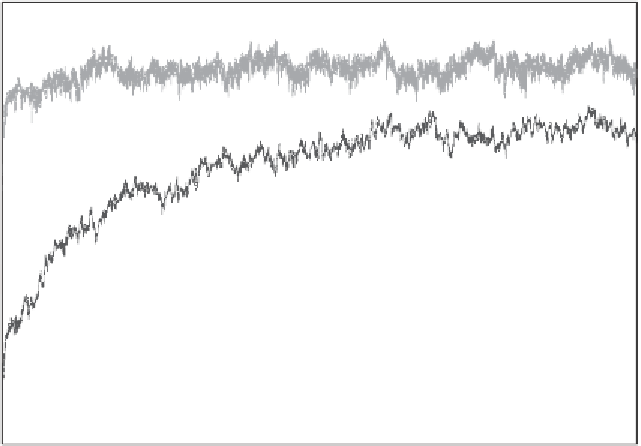Environmental Engineering Reference
In-Depth Information
0.9
0.8
0.7
0.6
0.5
0.4
0.3
0.2
0.1
Floating on
Floating of
0
0
2000
4000
6000
8000
10000
12000
14000
Time Steps
Figure 3.32
Satisfaction rate for 25 agent groups with and without floating enabled
A conceptual introduction to agent technologies was given, which summaries
some of the important characteristics about both the single agent and when they
collectively become a multiagent system.
Architectures, which describe the internal structure of agent, were discussion
in the perspective of different agent types. Reactive agents directly respond to
perceived inputs, whereas deliberative agents proactively pursue their own goals.
Also, the principles for communication and collaboration for agents were pre-
sented in the chapter. Coordination and negotiation are the dominating approaches
for manufacturing and material handling systems, but in most cases a control
system will use a hybrid of the two approaches. The means of collaboration are
strongly influenced by the organization of the agents. This chapter introduced
a number of structures to facilitate this, such as a hierarchical or team-based
organization.
Finally, the chapter concluded with two practical examples of different
agent-based manufacturing and material handling systems that were very
different in their approach for using agent technologies: a baggage handling
system composed of highly deliberative agent negotiating all the actions in the
system; and a control system for transferring items between baths in a chemical
process, where agents were simple reactive agents that coordinated their actions
to reach a solid plan for the global system.












































Search WWH ::

Custom Search